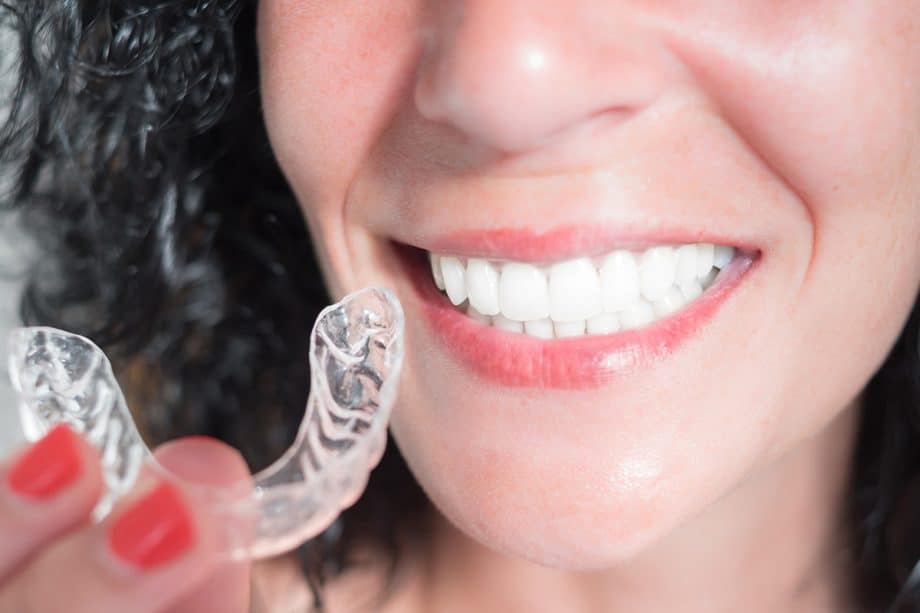Invisalign offers a practical alternative to conventional metal braces. People who want straighter teeth or have other imperfections they want to correct can usually rely on these clear aligners to effectively shift their teeth. For all their success, though, there are some issues that even Invisalign cannot fix.
Your dentist can only make that determination after performing a comprehensive exam of your teeth. Invisalign works in a very specific way to exert pressure, but certain types of bite issues may be beyond the scope of what it can do. Here’s what you should know if you’re considering this popular orthodontic treatment.
How Invisalign Treats Dental Issues
Invisalign treatment consists of a series of clear aligners, or trays, made with a type of sturdy plastic. The trays are designed to shift your teeth gradually over one- or two-week intervals, at which point you simply swap for the next set of aligners.
The aligners work by exerting pressure on the teeth to help them shift into the new position. For the first two or three days when you’ve switched to a new set of trays, you may feel some added pressure. This is normal, as it indicates your teeth are shifting slowly.
The duration of your treatment depends entirely on the severity of your teeth alignment and bite issues. Some patients’ cases are resolved in as little as six months, while others may take two or three years.
Why Invisalign Is Not Always the Solution
While Invisalign has proven to be a highly effective treatment for correcting misalignments, it’s not always the right choice. Some dental health issues might not respond to clear aligners because they require more intensive pressure for movement. In these cases, orthodontists typically recommend conventional metal braces instead.
Tooth Shape Corrections
Clear aligners are designed to fit snugly over your teeth and apply pressure in a controlled manner over a specific period of time. If your teeth are significantly smaller, or if they have an unusually rounded or pegged surface, they may not respond effectively to the aligner’s grip. That can make it challenging to achieve the desired results. Plus, if your teeth are smaller, the aligners may not have enough tooth to actually hold. This can result in limited movement.
Tooth Position Imperfections
You might not be a candidate for successful Invisalign treatment if the position of your teeth would preclude the aligners from straightening them properly. Severe misalignments typically respond better to conventional braces. If you require an extraction to create space, your dentist may recommend metal over Invisalign to promote better movement.
Vertical Tooth Imperfections
Invisalign works best when it shifts teeth horizontally. Anything beyond a side-to-side motion can pose a challenge for the aligners, whether it’s an intrusion or an extrusion situation. If your teeth would benefit from more significant vertical movement, traditional braces may be more effective in achieving that type of treatment goal.
More Pronounced Overbite
Some overbites may respond to Invisalign, but more severe cases likely won’t. Since the aligners move best horizontally, they won’t help more complex overbites that call for vertical movement. It may also take more time for complicated cases to respond, which is why orthodontists prefer to take a more measured approach. Using conventional braces is ideal because it allows for a more precise treatment tailored specifically to the patient’s correction needs.
Wide Tooth Gaps
Invisalign can absolutely correct gaps in the teeth, but there are limitations. Smaller gaps should respond to treatment within a few months, while more significant gaps typically require over a year to transform. However, anything larger than the size of a tooth might be difficult for the clear aligners to resolve. In cases like those, metal braces might be the better choice — but your orthodontist might also advise you to consider an implant instead.
Factors Affecting Whether You Should Get Invisalign
While there are some issues that Invisalign can’t correct successfully, sometimes the limitation might be that the patient isn’t a good candidate for the treatment. These are some of the factors that may affect your success with clear aligners.
- Your Age: teenagers and adults are exceptional candidates for Invisalign. However, kids may have a difficult time complying with the treatment to achieve success. In those cases, metal braces may be the better option, or waiting until the child is old enough to be compliant.
- Your Ability to Comply: Invisalign aligners pop right out with a simple tug. That’s one of their greatest advantages, but it’s also essential to put them back in after you’re done eating and drinking. Ideally, patients should wear the aligners for at least 22 hours a day. Anything less may impact efficiency, which is why kids may not have a hard time staying compliant.
- Your Dental Work: some people who have had dental work in the past might not be good candidates for Invisalign. Things like bridges and implants can pose challenges, but aren’t always deal-breakers. In some cases, the work may interfere with the aligners’ ability to move your teeth. Your orthodontist will make an assessment to determine what’s best for you.
Explore Invisalign at The Smile Architects
If you feel like your teeth could use a makeover, you might want to learn more about Invisalign. Let The Smile Architects determine whether you’re a candidate by scheduling a call today for more information. Call 704-875-1621 to schedule an appointment today.

